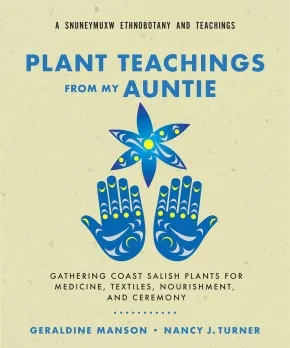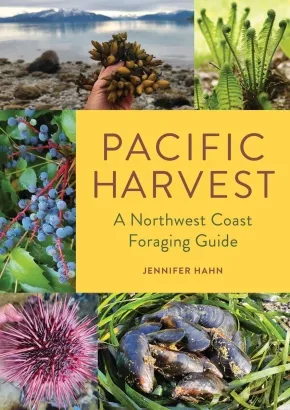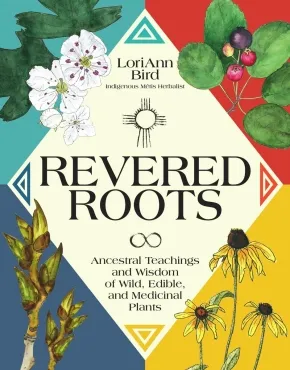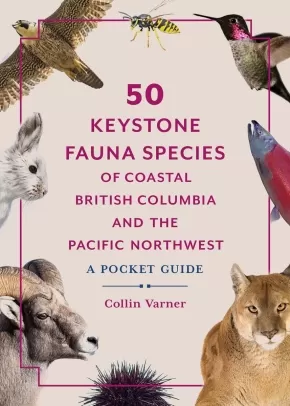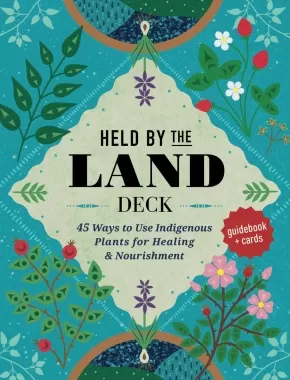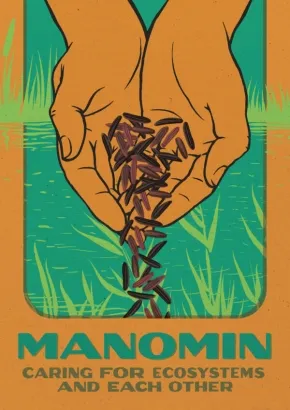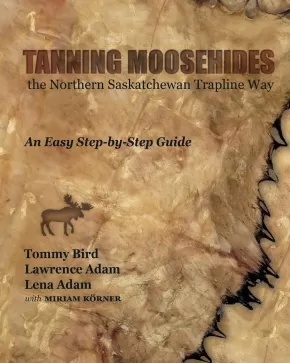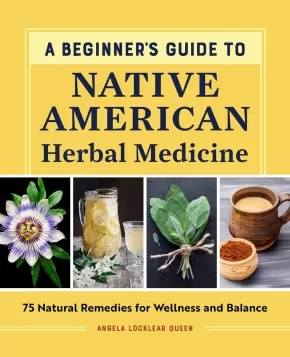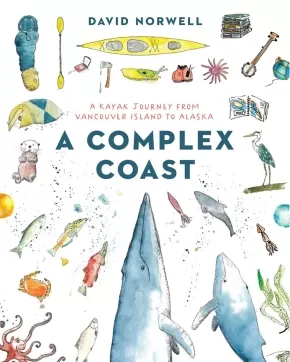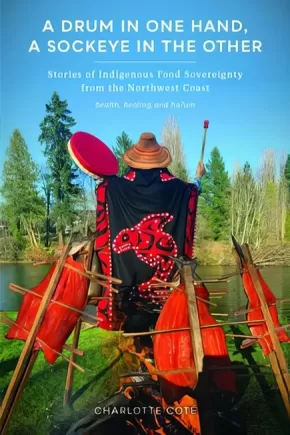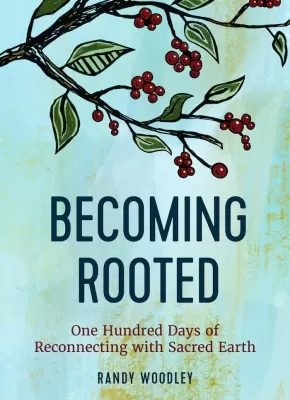Self-Sustainability
Synopsis:
A Snuneymuxw ethnobotany guide grounded in Indigenous knowledge and deep ancestral connection to the land.
Plant Teachings from My Auntie: Gathering Coast Salish Plants for Medicine, Textiles, Nourishment, and Ceremony is a richly illustrated compendium of the many culturally significant wild foods and herbal remedies found in the traditional territory of the Snuneymuxw First Nation.
Each entry features plant descriptions complete with both their Hul'q'umi'num and botanical names, typical native habitat, and traditional uses. Particular attention is paid to the sacred Western Red Cedar or "tree of life." The book also offers a selection of healing recipes; tips for respectful, sustainable harvesting; ethical and responsible preparation techniques; and a guide to local gathering sites.
Snu'y'ulh refers to teachings handed down through generations. Snuneymuxw Elder and Knowledge Keeper Geraldine Manson, whose traditional name is C'tasi:a, draws on the sacred knowledge passed on to her by her "Auntie Ellen," Dr. Ellen White, also known as Kwulasulwut. Central to these learnings is the fundamental concept or protocol of honoring gifts from the land by gathering and preparing in ways that respect the history, culture, spirituality, and Indigenous knowledge associated with each species.
This powerful work is a rare treasure that will appeal to those seeking to foster greater cultural understanding and ecological responsibility while deepening their commitment to meaningful reconciliation.
Additional Information
96 pages | 9.00" x 7.50" | Paperback
Synopsis:
This guide:
- Highlights 70-plus edible species including seaweeds, beach vegetables, shellfish, mushrooms, berries, trees, ferns, and wild and weedy greens
- Includes more than 60 recipes, plus tips for enjoying this natural abundance
- Includes key sections describe sustainable harvesting practices
Pacific Harvest, written by expert forager and guide Jennifer Hahn, introduces both novice and more experienced foragers to the Pacific Coast’s ample and diverse edible species. Recognizing your local edible berries, flowers, greens, roots, tree parts, mushrooms, seaweeds, beach vegetables, and shellfish is a passport to a comforting sense of place. Hahn shares immersive descriptions of her foraging adventures as well as full-color photos to make identifying these species easy and enjoyable. Each featured food listing includes common names, taxonomy, primary location, description, harvesting details, and culinary tips for transition from the wild to the kitchen table. Select listings call out notable nutrition and wellness benefits, along with contemporary research on conservation status.
This coastal foraging guide highlights authentic Indigenous harvesting practices including profiles of Indigenous leaders in the traditional foods movement. Hahn emphasizes a sustainable approach to foraging, reminding readers what other beings also depend on these plants and animals as food and shelter sources.
Pacific Harvest includes dozens of recipes featuring foraged foods, ranging from no-fuss delights like Salal Berry Scones and Kelp-Wrapped Salmon to comfort foods like Fiddlehead Quiche and Horse Clam Stir-Fry.
Additional Information
360 pages | 6.00" x 8.50" | 175 Color Photos | Paperback
Synopsis:
With Indigenous Métis herbalist LoriAnn Bird as your guide, connect with the ancestral wisdom of over 90 wild edible and medicinal plants from across North America.
A purposeful and powerful reference to the lessons, nourishment, healing, and history of our “plant teachers,” Revered Roots shares guidance on exploring, gathering, and reclaiming these long-revered plants as food and medicine. Separated into two sections, LoriAnn first reveals her own journey to understanding and respecting our plant elders. She offers teachings and lessons about remembering our relationship to the plants around us and our responsibility to the earth that sustains us.
The second part of the book is filled with insightful illustrated plant profiles detailing the identification, uses, and Indigenous folklore of some of the continent’s most treasured ancestral plants. Included are edible and medicinal bark, berries, and buds from trees and shrubs, as well as foliage, flowers, and fronds from herbs, “weeds,” and wildflowers; some native to the continent, others introduced generations ago.
Learn about the gifts our Rooted Nation of plants has to offer, including:
- Evergreen tips from spruces, pines, and firs
- Hawthorn berries, leaves, and flowers
- Plantain seeds and foliage
- Oswego tea leaves and blooms
- Slippery elm bark
- Motherwort flowers, stems, and leaves
- Black cohosh roots and rhizomes
- Marshmallow root
- Cottonwood buds and bark
- Plus dozens more
Reclaiming our natural rhythms and connections to the earth we walk on is essential to our health and well-being, both as individuals and as a community. One simple way to do that is by appreciating, respecting, and seeking to understand the plants around us.
Reviews
“With elegant reverence, LoriAnn Bird weaves connections among ancestral herbalist teachings from several lineages. She invites us into our own personal journey with plant medicine, giving us lessons on how to respect and honor the power of plants and their human knowledge keepers. She carefully and lovingly attributes each piece of teaching to its source. This book is a powerful legacy that we need more than ever at this time of healing and reconciliation. May its words fly into the world and land softly in the hearts of all who need them.”—Lori Weidenhammer, author of Victory Gardens for Bees: A DIY Guide to Saving the Bees
“Revered Roots is truly an essential work of art that imparts the sacredness of each plant, in each harvesting step and in the interspecies relationships with all of life. The authentic and grounded nature of LoriAnn Bird comes through the pages to connect us with a sense of belonging and reverence.”—Katrina Blair, founder of Turtle Lake Refuge; author of The Wild Wisdom of Weeds
“LoriAnn Bird, in her book Revered Roots, creates a beautiful story about our plant relatives with our history woven between the leaves of each page. She highlights each being and allows them to tell their story, including who they are, their benefits, uses, ways to eat, look-alikes, and what makes them unique. It's like looking at an old family album and finally knowing who each person is and what their spirit has to offer the world. The book, complete with information about our relatives, wrapped its warm arms around me as I nestled in to read each page, excited to learn more about family. LoriAnn’s voice provides a continuous honoring of our ancestors, our brilliance, and our resilience.”—Jenna Jasek, Shuswap (Kenpesq't) Band member, Director of Indigenous Learning, The Outdoor Learning School
“Revered Roots is a profound journey that gracefully and colorfully intertwines Indigenous wisdom with practical plant knowledge, offering a guide to reconnect with Nature’s green gifts. LoriAnn's heartfelt teachings inspire readers to honor and deepen their sacred relationship with the Earth.”—Dr. Kelly Ablard, Founder and CEO, Airmid Institute
“LoriAnn Bird weaves stories of plants into a tapestry of vivid imagery and teachings, allowing us to experience earth medicine in a way we never have before. Like a family gathered around the table exchanging stories of cherished ones, Lori Ann’s plant musings draw us into an intimate connection with our More-Than-Human Kin. From a small moment in a back alley in East Vancouver to hundreds of years of history from around the world, Revered Roots feels like an equal blend of encyclopedia, history book, and love letter. Get to know plants in a truly profound way through the words of a master storyteller, sister, friend, mother, and plant protector.”—Stephanie Rose, founder of Garden Therapy; author of Garden Alchemy and The Regenerative Garden
“This is a beautiful book on every level; the gorgeous drawings and painting of plants, the photography and images throughout, but also the words and the feelings on each page. Intensely moving and remarkably practical, deeply personal and filled with worldly wisdom, this book offers the reader a glimpse into a whole new way of seeing the nature. With a plant centered focus, through a biophilia lens, the author invites us to re-evaluate and re-vision our own relationships with plants and the natural world. This book is destined to be a classic.”—Chanchal Cabrera MSc, FNIMH, Medical Herbalist; Horticulture Therapist; author of Holistic Cancer Care
“LoriAnn has put a lifetime of collected knowledge into a work that connects people to plants in ways both honorable and honest. Revered Roots extols both the practical and sacred uses of the plants we see around us, while also nurturing our respect for our More-Than-Human Kin and our responsibility to the greater world. It has been a pleasure to be a teacher and herbal mentor to LoriAnn for many years.”—Don Ollsin, Master Herbalist; Conscious Spiritual Elder, Alchemy of Aging; author of Pathways to Healing
Additional Information
240 pages | 8.00" x 9.55" | Hardcover
Synopsis:
A compact, user-friendly field guide to 50 of the most prominent and ecologically significant animal species of the west coast, from British Columbia to Northern California.
A keystone species is an organism that defines and supports an entire ecosystem, filling a vital ecological niche. Without these species, the ecosystem would be radically altered or even collapse. This pocket-sized field guide by bestselling naturalist Collin Varner highlights 50 keystone birds, mammals, amphibians, insects, fish, shellfish, and mollusks found across the Pacific Northwest bioregion—including the American Crow, Bald Eagle, American Beaver, California Sea Lion, Sea Otter, Orca, Coyote, Grizzly Bear, Giant Pacific Octopus, Chinook Salmon, Pacific Tree Frog, Pacific Banana Slug, Mixed Bumblebee, and more. Each entry features clear photography, etymology, descriptions, habitat information, risks and warnings. This convenient and easy reference is perfect for casual walkers, hikers, campers, beachcombers, sailors, paddlers, and whale watchers, and draws awareness to the importance of conservation and protection of these crucial species.
Reviews
“Collin Varner provides captivating information that will help keep his 50 keystone species in the back of every reader’s memory.”—Richard Beamish, CM, OBC, FRSC, retired Canadian scientist
“The perfect portable reference for wildlife watchers.”—Barbara J. Moritsch, ecologist and author of Wolf Time and The Soul of Yosemite: Finding, Defending, and Saving the Valley's Sacred Wild Nature
“Enriches our understanding of these critical species, empowering us to contribute to their conservation. A heartfelt thank you to Collin Varner for illuminating the path to environmental stewardship.”—Paul Nicklen, Canadian photographer and filmmaker and co-founder of SeaLegacy
“Whether you love the land, sea or air, you’ll find creatures in this book to delight and to inspire your protection. Varner’s focus on keystone species is very important as they play a significant role in keeping our ecosystems healthy. His images and information give you a beautiful glimpse into their lives.” —Cheryl Alexander, award-winning filmmaker and author of Takaya: Lone Wolf, Good Morning Takaya, and Takaya’s Journey
Additional Information
128 pages | 5.00" x 7.00" | Paperback
Synopsis:
A compact, user-friendly field guide to 50 of the most prominent and ecologically significant plant species of the west coast, from British Columbia to Northern California.
A keystone species is an organism that defines and supports an entire ecosystem, filling a vital ecological niche. Without these species, the ecosystem would be radically altered or even collapse. This pocket-sized field guide by bestselling naturalist Collin Varner highlights 50 keystone trees, flowering plants, fruit-bearing plants, marine plants, and fungi found across the Pacific Northwest bioregion—including Douglas Fir, Sitka Spruce, Large-leafed Lupine, Wild Mint, Salal, Salmonberry, Marine Eelgrass, Red-belted Polypore, and more. Each entry features clear photography, etymology, descriptions, habitat information, risks and warnings. This convenient and easy reference is perfect for casual walkers, hikers, campers, and beachcombers, and draws awareness to the importance of conservation and protection of these crucial species.
Reviews
"This beautiful book is a valuable addition to the library of anyone passionate about the flora of the Pacific Northwest. . . A refreshing way of exploring these incredible organisms." —Amanda Swinimer, author of The Science and Spirit of Seaweed
“A concise and essential guide for anyone curious about the essential plants of the coastal Pacific Northwest.”—Elizabeth Price, author of Native and Ornamental Conifers of the Pacific Northwest
"Like a keystone itself, this guide helps define an ecosystem: the forests and coasts of the Pacific Northwest. It is an indispensable companion for any ramble or expedition."—Harley Rustad, award-winning and bestselling author of Big Lonely Doug and Lost in the Valley of Death
Additional Information
128 pages | 5.00" x 7.00" | Paperback
Synopsis:
Find connection with the land and feed your family locally, seasonally, and sustainably
Nourish your family from nature's pantry. Foraging as a Way of Life documents twelve months of wildcrafting, featuring five different plants each month for a full year of abundant local and seasonal eating. Enhance your sense of self-sufficiency while increasing food security, protecting habitat, and connecting with the land.
This lavishly illustrated, accessibly written, in-depth resource features:
- Accurate and detailed descriptions of herbs, mushrooms, berries, and other wild plants to avoid confusion and inspire confidence when determining plant identification.
- Foraging recipes for remedies, tonics, syrups, and handcrafted unique dishes incorporating wild ingredients—feast on rosehip soup with pan-fried dandelion flowers, followed by birch-bark cookies or chicory chocolate bars.
- Extensive guidance for safe use or consumption of each species, including cautions, lookalikes, and tips for sustainable harvesting.
Drawing on the author's own lived experience and her study of herbalism and ethnobotany, Foraging as a Way of Life is designed to inspire readers to share the exuberance and joy of wild foods while finding nourishment and connection in their local fields or forests. A must for every gardener who would like to gather dinner while weeding, for those wishing to learn sustainable harvesting while hiking, or for anyone who wants to create healthy, foraged meals while living lightly on the planet.
Reviews
"Mikayla Cannon's passion for harvesting nature's abundance has yielded a comprehensive guide to foraging throughout the year. Beautiful photographs, detailed profiles, and numerous recipes make this book an exciting guide to reclaiming a naturally healthful diet." -Darrell E. Frey, Three Sisters Farm, and author, Bioshelter Market Garden and The Food Forest Handbook
"Foraging truly is a way of life for Mikaela Cannon, and this book captures her meticulously researched knowledge, practical experimentation, and deep respect for the earth and its Indigenous knowledge-keepers. It is beautifully illustrated, and includes recipes, medicinal uses, personal stories, detailed plant descriptions, and wise precautions."-Remy Rodden, biologist, award-winning envirosinger, and environmental educator
Additional Information
288 pages | 7.50" x 9.00" | 450 Colour Illustrations | Paperback
Synopsis:
Have Indigenous plant knowledge at your fingertips with this gorgeously illustrated card deck from Leigh Joseph, an ethnobotanist and a member of the Squamish Nation.
Plants can be a great source of healing as well as nourishment, and the practice of growing and harvesting from trees, flowering herbs, and other plants is a powerful way to become more connected to the land. The Indigenous Peoples of North America have long traditions of using native plants as medicine as well as for food. Held by the Land Deck includes 45 cards of indigenous plants and their properties and a 48-page booklet to guide you along the way. Here are some of the things you will find:
- Tips to build your own home apothecary
- Notes on how to mindfully harvest and connect to the land you’re on
- Recipes for infused oils and salves
- A botanical glossary to help out with some of the more technical language
- Checklists for safe and sustainable harvesting
This beautifully illustrated card deck includes plants that are culturally significant to the Pacific Northwest, including Western Red Cedar, Devil’s Club, Broad-Leaved Plantain, Camas, Wapato, and Red Laver. Special features in the booklet include recipes for food and beauty products along with stories and traditions around the plants.
This elegant, full-color card deck and booklet is your go-to guide for Indigenous plants and will give you new insights into the power of everyday nature.
Additional Information
48 pages | 4.50" x 5.90" | 45 Cards and 48-Page Booklet
Synopsis:
Reclaiming crops and culture on Turtle Island
Manomin, more commonly known by its English misnomer "wild rice," is the only cereal grain native to Turtle Island (North America). Long central to Indigenous societies and diets, this complex carbohydrate is seen by the Anishinaabeg as a gift from Creator, a "spirit berry" that has allowed the Nation to flourish for generations. Manomin: Caring for Ecosystems and Each Other offers a community-engaged analysis of the under-studied grain, weaving together the voices of scholars, chefs, harvesters, engineers, poets, and artists to share the plant's many lessons about the living relationships between all forms of creation.
Grounded in Indigenous methodologies and rendered in full colour, Manomin reveals and examines our interconnectedness through a variety of disciplines-history, food studies, ethnobotany, ecology-and forms of expression, including recipes, stories, and photos. A powerful contribution to conversations on Indigenous food security and food sovereignty, the collection explores historic uses of Manomin, contemporary challenges to Indigenous aquaculture, and future possibilities for restoring the sacred crop as a staple.
In our time of ecological crisis, Manomin teaches us how to live well in the world, sustaining our relations with each other, our food, and our waterways.
Reviews
"This book is absolutely amazing and one of the most original collections that I have read in many years. Intended for everyone who inhabits Turtle Island-Indigenous and settler alike-Manomin encourages readers to develop deeper relationships and understandings by listening to Elders and the land. I believe Manomin will transform Indigenous scholarship." — Michael Dockry, University of Minnesota
"Manomin teaches us much; how to observe, the need for biodiversity, and the understanding that there will be rice somewhere else, on different years, based on water levels. Manomin has provided food during the harshest of times. We were told that we should care for our water and there would be rice. There are lakes where Manomin has been drowned by the state and provincial authorities, raising water levels for recreational boats. For many years the Mille Lacs band of Anishinaabe tried to get the water levels corrected for the rice to flourish on Onamia and Omeme Lakes. At one of those lakes, the water levels went down in a drought, and the Manomin returned, seventeen years later. At another lake it was fifty years later. The Manomin returned when the conditions were right. That reminds us, like this book, of the resilience of seeds, the resilience of life, and our agreement to care for all. This book is a blessing of teachings and acknowledgment for the great gift of Manomin." — Winona LaDuke, To Be a Water Protector: Rise of the Wiindigoo Slayers
Educator Information
Topics: Environmental Studies, History, Indigenous Studies, Decolonization, Agriculture and Food, Ethnobotany, History, Food Studies.
Table of Contents
List of Illustrations
A Note on Language by Brittany Luby and Margaret Lehman
Introduction by Brittany Luby, Samantha Mehltretter, and Margaret Lehman with Niisaachewan Anishinaabe Nation
Ch.1 Manitou Gitaggan, the Great Spirit’s Garden by Kezhii’aanakwat Ron Kelly, Giizhiigokwe Sandra Indian, Patees Dorothy Copenace, and Kathi Avery Kinew
Ch.2 Migration by Edward Benton-Banai
Ch.3 Seeds and Soils by Victoria Jackson
Manomin and Bergamot by Sean Sherman
Ch.4 Manomin as Teacher by Brittany Luby with Niisaachewan Anishinaabe Nation
Images from Anishinaabe-Aki: Harvest
Ch.5 Relational Vocabularies by Joseph Pitawanakwat
Manomin, Berries, and Love by Michelle Johnson-Jennings, PhD
Ch.6 Environmental Change, Environmental Care by Samantha Mehltretter and Andrea Bradford with Niisaachewan Anishinaabe Nation
Images from Anishinaabe-Aki: The Seasons by Andrea Bradford
Ch.7 Disconnection by Hannah Tait Neufeld
Manomin and Mushrooms by Shane Chartrand
Ch.8 Treaty and Mushkiki by Jana-Rae Yerxa and Pikanagegaabo, William Yerxa
Ch.9 Promise by Kristi Leora Gansworth
Epilogue by Andrea Bradford and Brittany Luby
Appendix 1: A Recipe for Corn Soup
Appendix 2: A Note on Indigenous Language Rights
Glossary by Jane Mariotti
Contributors
Notes
Selected Bibliography
Additional Information
240 pages | 6.00" x 8.50" | 40 colour illustrations, 2 maps, index, bibliography | Paperback
Synopsis:
Denesųłiné Elders Lawrence and Lena Adam have been tanning hides and sharing their knowledge with others for more than four decades. Woodland Cree knowledge carrier Tommy Bird helped his family tan hides on the trapline as a young boy. Together they share their lifetime of experience to guide a new generation of hide tanners to keep the tradition alive. The trouble-shooting tips and hands-on advice in this book will help you to make your own bone tools and turn raw moosehides into smoke-tanned hides soft enough to sew into mitts or moccasins. Combining traditional knowledge with easy-to-follow instructions and detailed colour photos, Tanning Moosehides the Northern Saskatchewan Trapline Way is a practical guide you will refer to again and again.
Educator Information
The publisher recommends this resource for ages 10+
Recommended in the Indigenous Books for Schools catalogue as a valuable resource for Art, Science, and Social Studies in grades 5 to 12.
Themes: Animals, Arts and Culture, Cultural Teachings, Fashion, Traditional Knowledge.
Additional Information
64 pages | 8.50" x 11.00" | Spiral Bound
Synopsis:
A revised and expanded edition of the popular Pacific Northwest foraging cookbook from Deerholme Farm on Vancouver Island.
The Deerholme Foraging Cookbook is an exploration of the wild foods found in the Pacific Northwest. Award-winning chef and author Bill Jones’s recipes feature local mushrooms, edible plants, sea vegetables, and shellfish. The product of over twenty years of research and professional cooking with foraged foods, the book serves as an introduction to the world of wild food and contains identification and sourcing information, harvesting and preparation tips, and more than 100 delicious recipes featuring wild foods. The recipe list includes techniques for preserving food and covers basic pantry preparations, appetizers, soups, salads, and desserts, as well as meat, seafood, and vegetable dishes.
Linking to traditional uses for wild foods and future possibilities for our diet and wellbeing, as well as enhancing our appreciation of the environment around us, The Deerholme Foraging Cookbook is richly enhanced by the author’s photography of wild foods and dishes, and his own foraging stories. The recipes are global in influence and use simple techniques woven together with expert knowledge to create delicious, wholesome homemade food.
Additional Information
304 pages | 7.50" x 9.00" | 2nd Edition
Synopsis:
Improve your well-being with Native American herbal medicine
Native American herbal medicine offers a powerful way to connect with the earth and heal naturally—and with this handbook of Native American herbs, you can learn all about herb uses and their restorative effects. Written by an Indigenous herbalist, this guide shows you how to responsibly use traditional plants to treat anxiety, colds, inflammation, and more.
This standout among books about herbs and healing will help you:
- Learn about a time-honored practice—Discover the origins and healing secrets of Native American herbalism, its traditional and modern uses, and how tools like the medicine wheel teach us about our relationship with the natural world.
- Identify the essential herbs—Explore the healing properties of medicinal herbs for wellness, from anise hyssop to yerba santa.
- Make 75 natural remedies—Ease physical and emotional ailments with Native American remedies, like Memory Support Tea, Stress-Induced Headache Tincture, and Antibacterial Healing Herb Liniment.
Tap into traditional wisdom with this Native American herbal medicine book for health and well-being.
Reviews
"A beautiful jumping-off point for anyone who is interested in practical herbalism. Angela organizes the wisdom of Native American herbalism in a way that is accessible for anyone to pick up and fold into their everyday life." —Kathleen Lee, acupuncturist, herbalist, and spiritual business mentor
"Angela is a wise and fierce protector of plant medicine and traditions of healing. Her first book, A Beginner's Guide to Native American Herbal Medicine, is a meaningful, accessible resource for readers who seek to ground themselves in understanding and build an herbal practice of integrity." —Graham Wesley
Additional Information
165 pages | 7.50" x 9.25" | full-colour photographs throughout | Paperback
Synopsis:
A soul-searching personal account of a young man’s 1,700-kilometre kayak journey from Victoria, BC, to Gustavas, Alaska, illustrated with whimsical watercolour maps and illustrations of local flora, fauna, and landscapes.
In 2014, twenty-four-year-old geography student David Norwell set off on a daunting kayak journey in search of purpose in his life. A jigsaw puzzle of jagged mainland and over 50,000 islands—stretching from southern Vancouver Island to Alaska—lay in front of him. A self-described ordinary kid from small-to-medium-town, British Columbia, David had paddled through the Gulf Islands and guided youth groups on a nine-day journey from Nanaimo to Victoria. But nothing could prepare him for this.
For the next several months, David navigated the waters off the coastal British Columbia, recording his observations, musings, and daily activities in a notebook. The result is this one-of-a-kind travelogue, filled with more than 700 whimsical watercolour illustrations of coastlines, local plant and animal species, camping supplies, and portraits of people he met along the way. He wrote about the nature of solitude, the search for meaning and adventure, the wildlife he encountered, the survival skills he acquired, and the existence of his own privilege. A Complex Coast is an unforgettable coming-of-age story that will appeal to kayakers, naturalists, and anyone looking for adventure.
Additional Information
224 pages | 8.00" x 10.00" | Paperback
Synopsis:
Author Leigh Joseph, an ethnobotanist and a member of the Squamish Nation, provides a beautifully illustrated essential introduction to Indigenous plant knowledge.
Plants can be a great source of healing as well as nourishment, and the practice of growing and harvesting from trees, flowering herbs, and other plants is a powerful way to become more connected to the land. The Indigenous Peoples of North America have long traditions of using native plants as medicine as well as for food. Held by the Land honors and shares some of these traditions, offering a guide to:
- Harvesting herbs and other plants and using them topically
- North American plants that can treat common ailments, add nutrition to your diet, become part of your beauty regime, and more
- Stories and traditions about native plants from the author's Squamish culture
- Using plant knowledge to strengthen your connection to the land you live on
Early chapters will introduce you to responsible ways to identify and harvest plants in your area and teach you how to grow a deeper connection with the land you live on through plants. In the plant profiles section, common plants are introduced with illustrations and information on their characteristics, range, how to grow and/or harvest them, and how to use them topically and as food. Special features offer recipes for food and beauty products along with stories and traditions around the plants.
This beautiful, full-color guide to Indigenous plants will give you new insights into the power of everyday plants.
Additional Informaiton
192 pages | 8.00" x 9.25" | Hardcover
Synopsis:
In the dense rainforest of the west coast of Vancouver Island, the Somass River (c̓uumaʕas) brings sockeye salmon (miʕaat) into the Nuu-chah-nulth community of Tseshaht. C̓uumaʕas and miʕaat are central to the sacred food practices that have been a crucial part of the Indigenous community’s efforts to enact food sovereignty, decolonize their diet, and preserve their ancestral knowledge.
In A Drum in One Hand, a Sockeye in the Other, Charlotte Coté shares contemporary Nuu-chah-nulth practices of traditional food revitalization in the context of broader efforts to re-Indigenize contemporary diets on the Northwest Coast. Coté offers evocative stories of her Tseshaht community’s and her own work to revitalize relationships to haʔum (traditional food) as a way to nurture health and wellness. As Indigenous peoples continue to face food insecurity due to ongoing inequality, environmental degradation, and the Westernization of traditional diets, Coté foregrounds healing and cultural sustenance via everyday enactments of food sovereignty: berry picking, salmon fishing, and building a community garden on reclaimed residential school grounds. This book is for everyone concerned about the major role food plays in physical, emotional, and spiritual wellness.
Reviews
"A powerful philosophy of food sovereignty. Coté successfully navigates myriad scholarly and nonscholarly voices, telling a compelling comprehensive story that helps us understand the practices and policies needed to make change in our food systems." — Kyle Whyte, Michigan State University
"Adeptly uses a deep storytelling method, including both lived experience and critical analysis of history and theory, to examine experiences and transformations of Indigenous foodways." — Hannah Wittman, University of British Columbia
"I am so grateful for Charlotte Cote’s A Drum in One Hand, a Sockeye in the Other, which creates a path into the living foodways and thoughtways of her people. Her warm, storytelling voice and sharing of collective knowledge embody the generous spirit of a feast, and this book itself, is a feast." — Robin Wall Kimmerer (Potawatomi), SUNY Environmental Science and Forestry
Additional Information
208 pages | 6.00" x 9.00" | 17 b&w illustrations | 2 maps | Paperback
Synopsis:
What does it mean to become rooted in the land? How can we become better relatives to our greatest teacher, the Earth? Becoming Rooted invites us to live out a deeply spiritual relationship with the whole community of creation and with Creator.
Through meditations and ideas for reflection and action, Randy Woodley, an activist, author, scholar, and Cherokee descendant, recognized by the Keetoowah Band, guides us on a one-hundred-day journey to reconnect with the Earth. Woodley invites us to come away from the American dream--otherwise known as an Indigenous nightmare--and get in touch with the water, land, plants, and creatures around us, with the people who lived on that land for thousands of years prior to Europeans' arrival, and with ourselves. In walking toward the harmony way, we honor balance, wholeness, and connection.
Creation is always teaching us. Our task is to look, and to listen, and to live well. She is teaching us now.
"This journey is your personal invitation into a different kind of relationship with nature—or, as I like to say, with the whole community of creation. It is also an invitation into a different kind of relationship with Creator, however you understand Creator to be present in your own life and within everything—as God, as Great Mystery, as a higher power, or as the universe." - Randy Woodley
Reviews
“Randy Woodley reminds us that we all have an understanding of what it means to be indigenous to a spiritual place. Through slowly unfolding layers of meaning, he shows us where we may discover that place for ourselves.”—Steven Charleston, elder of the Choctaw Nation of Oklahoma
“Becoming Rooted offers us a precious way back into the land: a way into restoration and reciprocity, a way into healing ourselves and the land, a way of belonging again, a way of finding out who we are. Randy Woodley takes us by the hand and walks with us for the first one hundred days. We begin to think and feel differently, our senses gain new direction, and we start to gain roots. I am so grateful for this book and for the life and work of Randy Woodley.”— Cláudio Carvalhaes, associate professor of worship, Union Theological Seminary
“Becoming Rooted draws you deeper into relationship with the land where you live. Few of us live in the place we were born, but these reflections take you past that disconnection and help you notice the world around you in new ways.”—Patty Krawec, Anishnaabe author and co-host of the Medicine for the Resistance podcast
Educator Information
Includes meditations, reflections, and action items for 100 days.
Additional Information
256 pages | 5.20" x 7.10" | Hardcover

